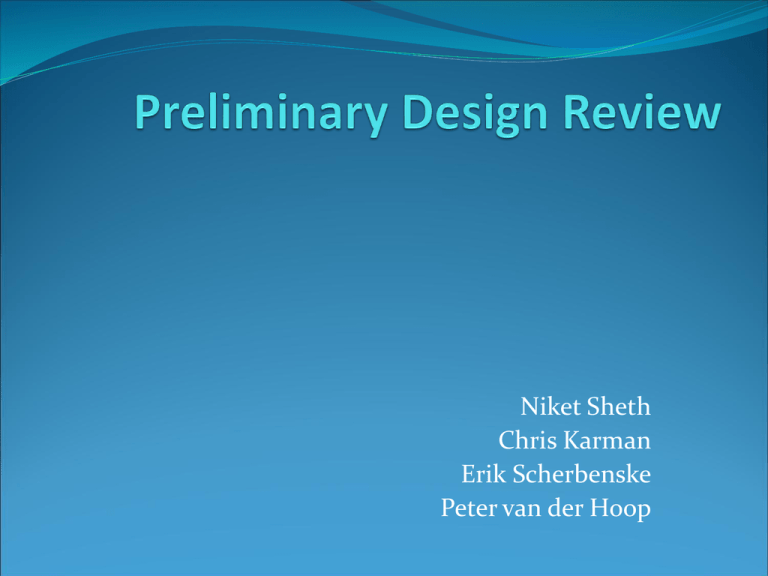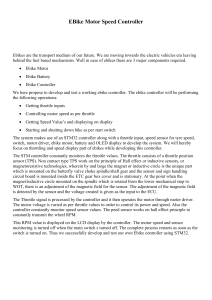Niket Sheth Chris Karman Erik Scherbenske Peter van der Hoop
advertisement

Niket Sheth Chris Karman Erik Scherbenske Peter van der Hoop Purpose An easy-to-use robot to craft beautiful and large scale art. Enjoyable for kids and adults alike. Applicable to artists and handicapped users. To get RICH! Objectives Build a robot to reproduce shapes, text or follow user input paths. Robot will use markers or paint to create drawings on the floor. Scalable drawings depending on floor size. Feasibility Two main systems Autonomous robot to move forward, back, rotate left and right Drawing reproduction Movement Previously done in Capstone projects Matter of writing controls for the stepper motors Challenges: Accuracy Speed Power Drawing Simple On/Off for marker/paint control using servos/actuators Microcontroller to provide the path to create the art. Multiple color control Outline CPU Universal Sub-System Controller Convert and output data to sub-systems Motor Controller Marker Controller Convert and receive data from sub-systems UI Sensor Controller Convert and Transmit Transmit signals to motor controller for movement(forward, backward, rotate left/right) Output a signal line for marker (up/down) Color selector signal (if time permits) Receive and Convert Receive path from user interface Convert user input to step by step directions for motor controller Receive interrupts from sensor controllers and generate alternative path or stop Monitor signal from the power management system (turn systems on and off) User Interface Tethered Control using: Joystick Keyboard Pre-Encoded Instructions Touchpad Wireless control should eventually replace tethered line Sensor Controls Collision Detection Bumpers that detect collision and send data to CPU Infrared that detect objects in path before collision Boundary Detection Detect predefined physical boundary Infrared (black line surrounding “canvas”) Software boundary Max distance allowed for travel from initial starting point Turn OFF or correct motion when the sensors detects a problem. Motor Control Stepper Motors Require high current for functionality (2 A) Holding current even when not moving Specific degree of movement (1.8 deg/pulse) Controlled by square waves Waves generated by Motor Microcontroller Speed determined by frequency Distance determined by signal length (number of pulses) Marker Control Controls motion (up/down) of marker Sends data to servo based on the signal from controller Potential color change capabilities Challenge Mechanical Design Power Management Power Control Board Provide different voltages to various microcontrollers Isolation circuit for providing current to motor-Separate battery may be a solution Power monitoring and reporting Conservation of power by shutting down components not being used Rechargeable Division of Labor Task Peter Erik X X Niket Chris X X Mechanical Chassis/Mounts Electrical Input Controls Motor Controls X CPU/Power Management X Marker/Sensors X X X X Software CPU X X UI Software X X X X X X Integration X X Manufacturing X X Testing X X X X Documentation X X X X Schedule Budget Risks Signal/Power Noise Motor Accuracy Loose Contacts between wheel and ground Inaccurate stepping by motor Power management surges and spikes Lose communication with robot Range Loose wiring Uncertainty in learning curve Uncertainty in parts availability and delivery Unfamiliar technology Recovery Noise – Isolation of batteries of motor ctrl and signals Accuracy – feedback sensor and PID control Power – Fuses for managing harmful spikes Loss in Communication – Turn OFF and reset Uncertainty – Plan Ahead and adapt QUESTIONS????





